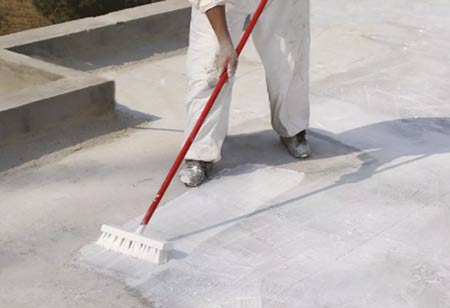Thank you for Subscribing to Construction Business Review Weekly Brief
Specials
- Apartment and Condominium Contractors Canada
- Decking Canada
- Architectural Glass Europe
- MEP APAC
- Construction Saudi Arabia
- German Apartment and Condominium Contractors
- Construction Law APAC
- Outdoor Construction
- Foundation Construction Canada
- MEP Canada
- Kitchen and Bath
- Cold Storage Construction APAC
- Precast Concrete Europe
- Construction Staffing Europe
- Pre-Construction Services
- Flooring System APAC
- Scaffolding Canada
- Swimming Pool Construction Canada
- Construction Management Canada
- Cold Storage Construction Canada
- Flooring Systems Europe
- Residential Construction
- Concrete Canada
- Construction Cladding Europe
- Construction Cladding APAC
- Concretes, Aggregates and Construction Materials APAC
- Concretes, Aggregates and Construction Materials Europe
- Commercial Contractors Europe
- Commercial Contractors APAC
- Dummy
- Construction Insulation, Coating and Waterproofing
- Construction Management APAC
- Landscaping Canada
- Construction Coating Europe
- Construction Tech Startups Europe
- Insulation Services Europe
- Mechanical Contractor Canada
- Mould Remediation and Testing Europe
- Swimming Pool Construction APAC
- Building Sealing Solutions Europe
- Construction Engineering Services
- Mechanical Electrical and Plumbing
- Roofing Systems Europe
- Architectural Glass APAC
- Startups APAC
- Construction Forensic and Owners Representative
- Flooring System
- Waterproofing APAC
- Wall Systems
- Safety and Compliance Europe
- Construction Bidding and Auctions
- Modular and Prefab Construction
- Architectural Glass
- Construction MENA
- Construction Demolition and Recycling Europe
- Modular Construction Europe
- Construction Interiors
- Steel Building APAC
- HVAC
- Doors and windows
- Construction Latam
- Building Information Modeling APAC
- Sustainable Construction APAC
- Building Restoration and Maintenance
- Commercial Contractors
- Specialty Construction
- Construction Engineering Canada
- Construction Engineering MENA
- Modular Construction Canada
- Modular Construction APAC
- Roofing and Siding Systems
- Workforce Management and Staffing
- Roofing Systems APAC
- Construction Consulting
- Steel Building Europe
- Construction Demolition and Recycling APAC
- Safety and Compliance APAC
- Concretes, Aggregates and Construction Materials
- Construction Cladding
The Synergy of Waterproofing and Flooring in Acoustic Control: A Modern Construction Imperative

By
Construction Business Review | Friday, June 13, 2025
Stay ahead of the industry with exclusive feature stories on the top companies, expert insights and the latest news delivered straight to your inbox. Subscribe today.
Fremont, CA: Noise pollution is a growing concern in modern European buildings, impacting occupant well-being, productivity, and overall comfort. Effective acoustic control is no longer a luxury but a necessity, driven by evolving regulatory standards and a greater understanding of sound's physiological and psychological effects.
The Impact of Flooring on Acoustic Control
Acoustic flooring systems achieve this through mechanisms such as resilient underlays, layered construction, and the absorption of airborne sound. What is particularly noteworthy is the use of sustainable and eco-friendly materials, such as cork, recycled rubber, and textiles, in these systems. The research into bio-based composites and mycelium-based composites further underscores the industry's commitment to sustainability. Thin-layer solutions with high performance, integrated underlay systems, waterproof acoustic underlays, and enhanced luxury vinyl tiles (LVT) with acoustic properties are all part of this eco-conscious approach. A growing trend is the seamless integration of acoustic flooring with interior design, offering a range of patterns, colours, and textures. These innovations not only reduce sound but also contribute to a more sustainable and eco-friendly acoustic environment in buildings, making a significant impact on the planet.
The Role of Waterproofing in Acoustic Control
Waterproofing is crucial in maintaining and enhancing acoustic performance by preventing moisture damage, ensuring structural integrity, and creating airtight barriers. Innovative waterproofing membranes, such as polyurethane and hybrid polyurea systems, offer long-term water protection and protect acoustic layers. Polyurethane-based injection foams, such as KIMcase Injection System, fill cracks and prevent water from compromising sound insulation layers. Water-resistant acoustic materials are being developed to maintain performance even in damp conditions. Innovative waterproofing membranes, such as DPACT, are designed to be both waterproof and highly effective for noise insulation under screeds, instilling confidence in their soundproofing capabilities.
Integrated Systems: A Synergistic Approach
The actual effectiveness of building systems lies in the early integration of flooring and waterproofing solutions during the design phase. This holistic, synergistic approach ensures that both systems function in harmony, significantly enhancing acoustic performance and overall building efficiency.
A successful integrated design strategy includes a layered assembly design that strategically positions the waterproofing layer to protect acoustic insulation or utilises materials that serve dual purposes—both sound-dampening and moisture-resistant. Second, material compatibility is crucial; all components, including flooring, underlays, and waterproofing membranes, must work in harmony without adverse chemical or physical interactions to ensure durability. Third, attention to detailing and junctions—especially where floors meet walls or around service penetrations—is essential to prevent flanking sound transmission. The use of acoustic sealants and resilient flanking strips in these areas is significant. Early design considerations are vital; incorporating acoustic requirements at the outset of architectural and structural planning minimises the risk of expensive retrofits and supports regulatory compliance.
Achieving effective acoustic control in European buildings requires a holistic and integrated approach. The ongoing innovations in materials and a strengthening regulatory landscape will continue to drive the evolution of these critical integrated systems.





